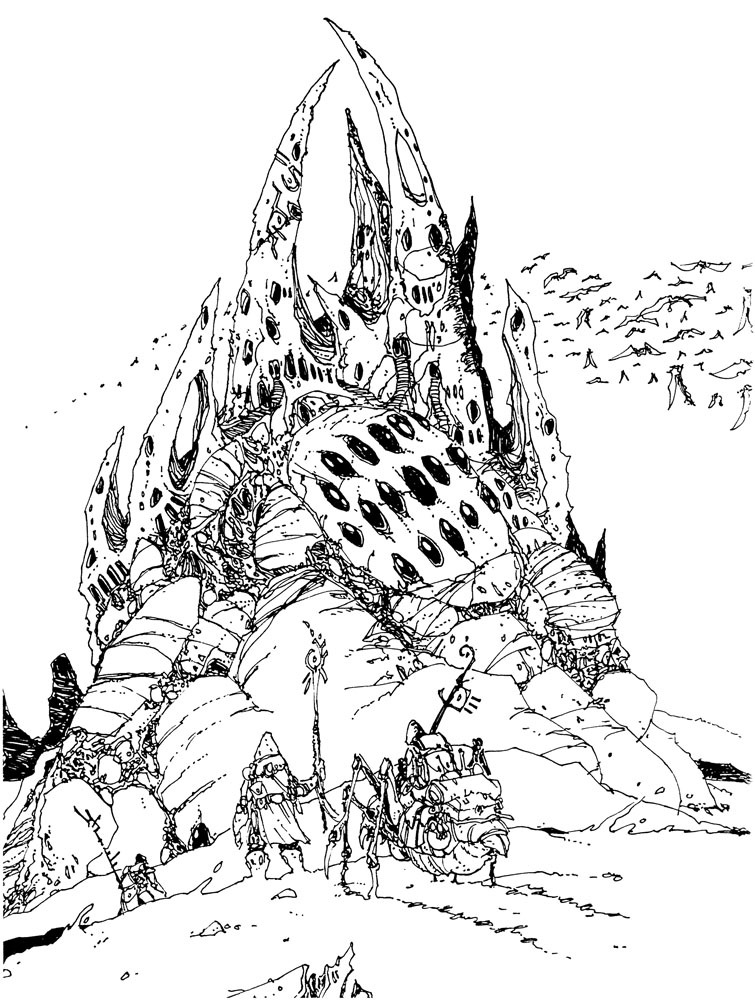Traditional settings typically are Tolkienesque worlds, like anything set in the Forgotten Realms.
A large part of the settings that exist today, and those that can be traced back to the past, do not belong to what you call traditional settings. It is easy to think that we are full of "traditional settings" inspired by Tolkien's works if we only look superficially at the elements that compose it, and that is where the preconceived (and erroneous) ideas are created in the heads of the ignorant that High Fantasy is all about sappy stories, even on a site like the RPG Codex, so the situation outside of here is worse because they know even less about what they are talking about.
To lay some groundwork, a setting that was at its core (and not superficially) inspired by Tolkien, should have strong and well-defined moral lines (not to be confused with cheap moralism, which is more typical of modern settings). It draws from different mythological traditions that were largely revived during romanticism. Apart from the fact that it focuses more on fantastic creatures than on humans.
Most settings deviate from any type of common roots. While we're at it, let's take a few examples of some pretty famous stuff:
- Pathfinder: A setting where there is travel to other worlds and universes, all of which exist at the same time, including our current world which has even been travelled to in those stories. There are a number of twisted races which should be closer to your definition of weird.
- Divinity Original Sin: It started out as a setting that wasn't taking anything seriously until its second installment came out. Few moral definitions and no races are inspired by Tolkien's other than human.
- The Elder Scrolls: 0 moral delineations and is a seesaw of inconsistencies from day 1. Their most beloved game is a place full of mushrooms (Morrowind), their best known game is a place full of humans (Skyrim) and the game in the middle of these two doesn't even take its own setting seriously (Oblivion).
- Initial Forgotten Realms: Human-centric setting, no matter that there are some regions where there are no humans, this is the most predominant and superior race by many aspects on the continent, said in their books. From the beginning they had lax morals and questionable details. Most of its races only look very superficially similar, and in many cases not even that. It has undergone so many changes over the years, nowadays it has no morals at all in its world and races, can't really be considered a fantasy setting anymore.
- The Witcher: It's not even high fantasy but low "fantasy". It shares much of what has already been said with the previous settings.
As for the weird ones that Outer Worlds thing is your average sci-fi series made by insufferable Californians. Weird settings are Dark Sun, Planescape, and even Bloodlines (which takes a lot from Anne Rice), more special than all that.
Needless to say, all the characteristics you ascribe to "traditional" fantasy here are not its own. Traditional settings as they are called here are responsible for some of the strangest places and creatures that exist in fantasy. In fact: The weirdest things that exist all belong to High Fantasy.
I could go on and on, but it's honestly not worth it. The vast majority of RPGs don't even have enough detail put into them to be considered to have a setting as such. The funniest thing of all is that some settings that might have some REAL similarity to Tolkien, are almost never mentioned because they are not popular. This is the case of Greyhawk, Gary Gygax's original setting, which has an very clear morality. Even so, it is far from being part of the same line, as it is EXTREMELY human-centric. On top of that it is more than 25 years old. Something more similar is Dragonlance, but it is also more than 20 years old.
Traditional or High Fantasy settings are a huge minority. Because now everyone wants to be "gray", "clever" and "different" or an amusement park with elements that don't fit, before they even know and understand the medium they are in.
























